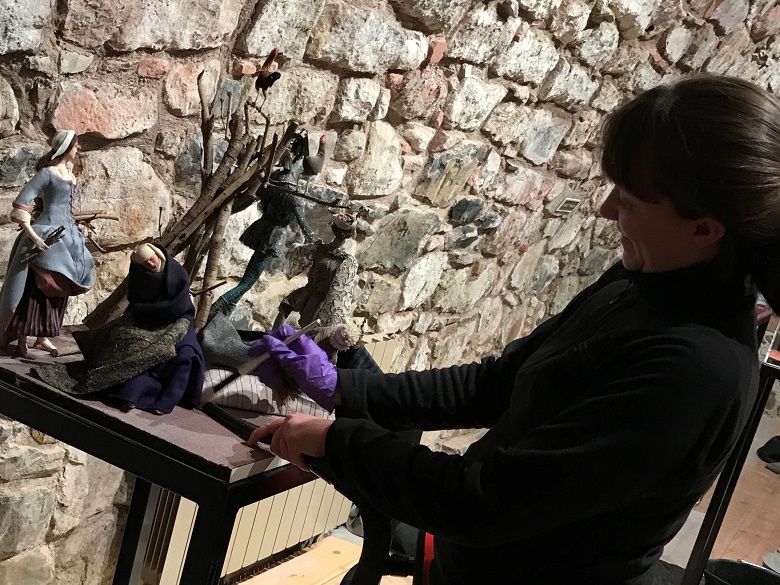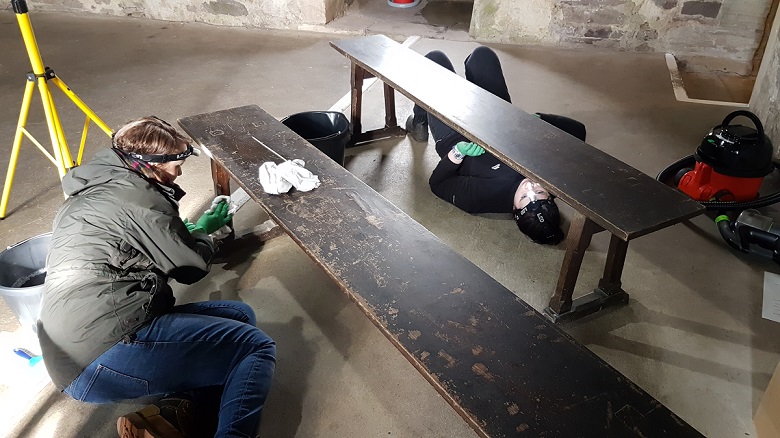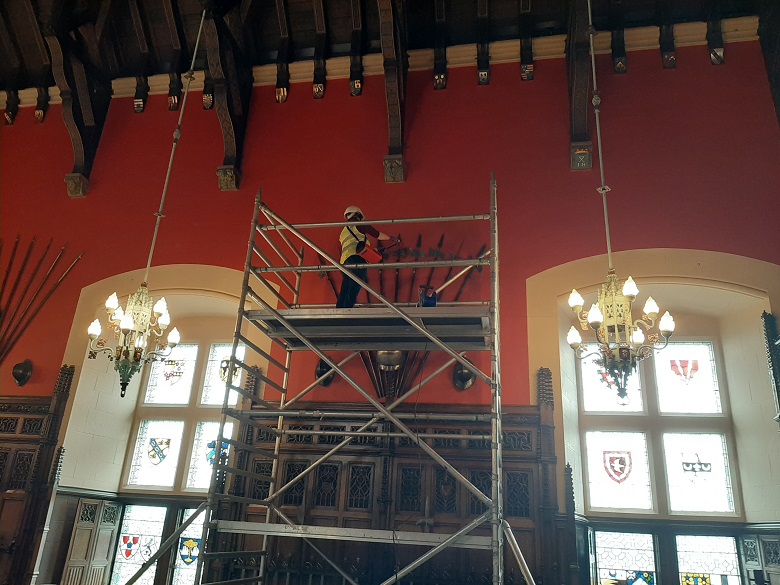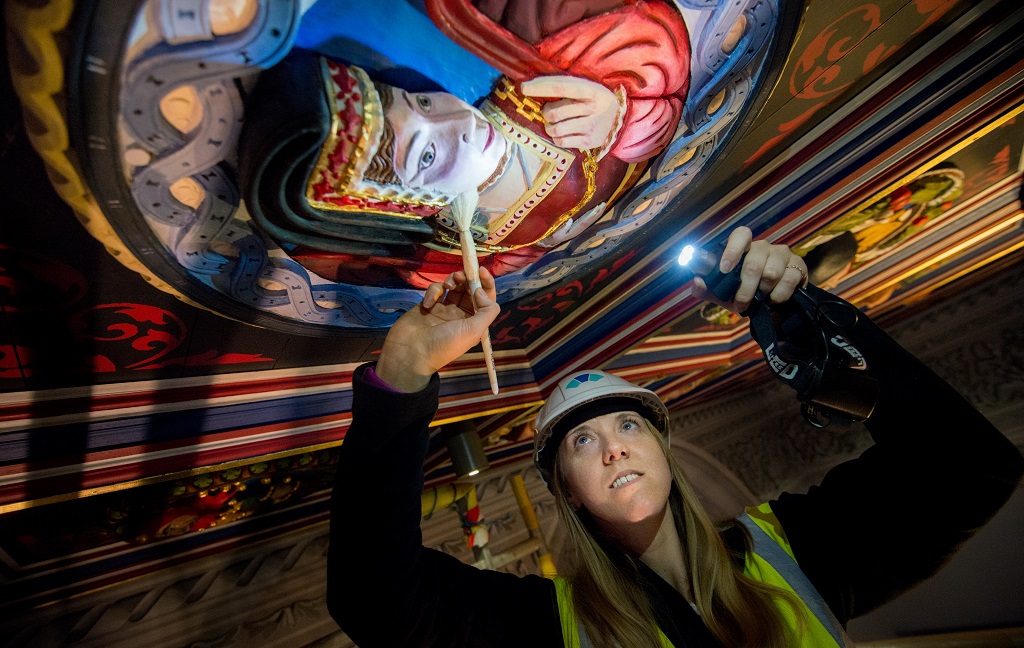At Historic Environment Scotland, we care for over 41,000 objects from more than half of our 336 Properties in Care. These artefacts include archaeological finds, fine art, carved stones, military objects, industrial equipment and much, much more. Winter brings an opportunity for our teams to spend more time on site managing the collections.

Condition checking and cleaning the doll collection at Smailholm Tower
Winter welfare
Spanning over 5,000 years of history our collections are spread across the country at over 140 locations, from Shetland to Dumfries. They’re of local, national and international significance.
As our seasonal sites close to visitors during the winter months, the teams continue to work behind the scenes to care for both the buildings and the collections inside. Our winter work programmes vary from site to site- from assessing any negative impacts caused by changes in temperature to the careful cleaning of artefacts.

The HES conservation team cleaning and waxing 19th century oak benches on display at Doune Castle
Monitoring Deterioration
For our more robust objects, we work with local staff to carry out regular checks of the collections on display and in storage. This includes looking for any signs of deterioration to the objects themselves, as well as checking for wider environmental issues in the building. Things like water ingress or insect activity could have a negative effect.
We keep a record of the results of these checks – whether an issue is discovered or not. This means we can monitor any developments. In other locations we ‘put the site to bed’ for the winter. This means we remove particularly vulnerable items, such as textiles, from display.

Brushing of the Stirling Heads on display at Stirling Castle
Preserving for the Future
Winter closures also provide us with a good opportunity to carry out collections housekeeping tasks and undertake conservation assessments and treatments. We use specialist conservation equipment when cleaning our objects as these are designed especially for fragile historic artefacts.
We’re also able to do this work at sites that remain open as visitor numbers tend to be lower than in the summer months. Keep an eye out for the team when you visit!
Many of our objects are difficult to reach from ground level, so we need to use scaffolds to access them. This process allows us to ensure that our collections continue to be preserved for future generations. Plus it has them looking their best for our visitors!

Up high cleaning weaponry on display in the Great Hall at Edinburgh Castle
See Our Collections
Many of our Collections objects are able to be spotted as you explore our sites. Others are held in central storage locations. The great news is that you don’t miss out though. You can explore our collections online, from maritime treasures to military equipment.

This frog-shaped flower holder is one of the most remarkable and charming pieces on display at Duff House and can be viewed online
Elsewhere on the blog, you can find out how we cared for our collections during the Covid-19 pandemic and take a look inside Trinity House.

